Ema is a trained architect, writer and photographer who works as a designer at REX in NYC. Inspired by her global experiences, she shares captivating insights into the world’s most extraordinary cities and buildings and provides travel tips on her personal blog, The Travel Album.
Brooklyn, the bustling borough of New York City, has undergone a remarkable transformation in recent years, breathing new life into its historic structures through adaptive reuse projects. These endeavors not only preserve the borough’s rich architectural heritage but also offer innovative solutions to urban revitalization. In a city known for its constant evolution, Brooklyn is a dynamic tapestry woven with diverse cultures, ideas, and histories. Its diverse neighborhoods are home to myriad architectural gems, each with its own story to tell. Through adaptive reuse, these stories are both preserved and integrated into the fabric of modern-day Brooklyn, creating a tangible link between past and present.
From repurposed industrial warehouses to transformed historical landmarks, these projects represent the ingenuity and creativity driving Brooklyn’s ongoing revitalization. They serve as beacons of inspiration for future developments, demonstrating the potential for adaptive reuse to foster sustainable growth, cultural enrichment, and social cohesion in urban environments. Here, we explore some outstanding examples of adaptive reuse in Brooklyn, each showcasing a unique blend of preservation, innovation, and community engagement.
Domino Sugar Refinery and Domino Park
By SHoP Architects and Field Operations, Williamsburg, New York
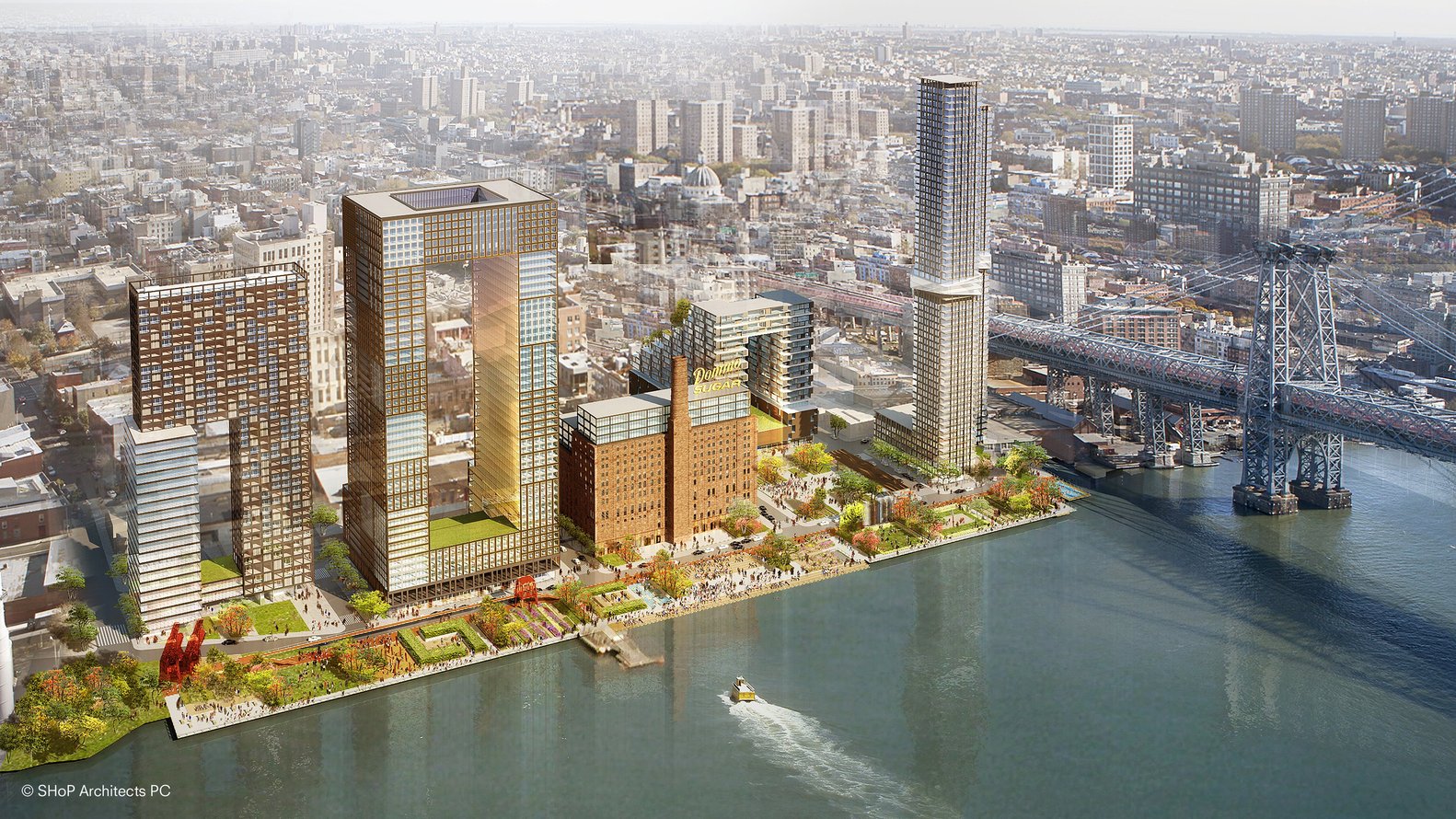
Domino Sugar Refinery by SHoP Architects, Williamsburg, New York
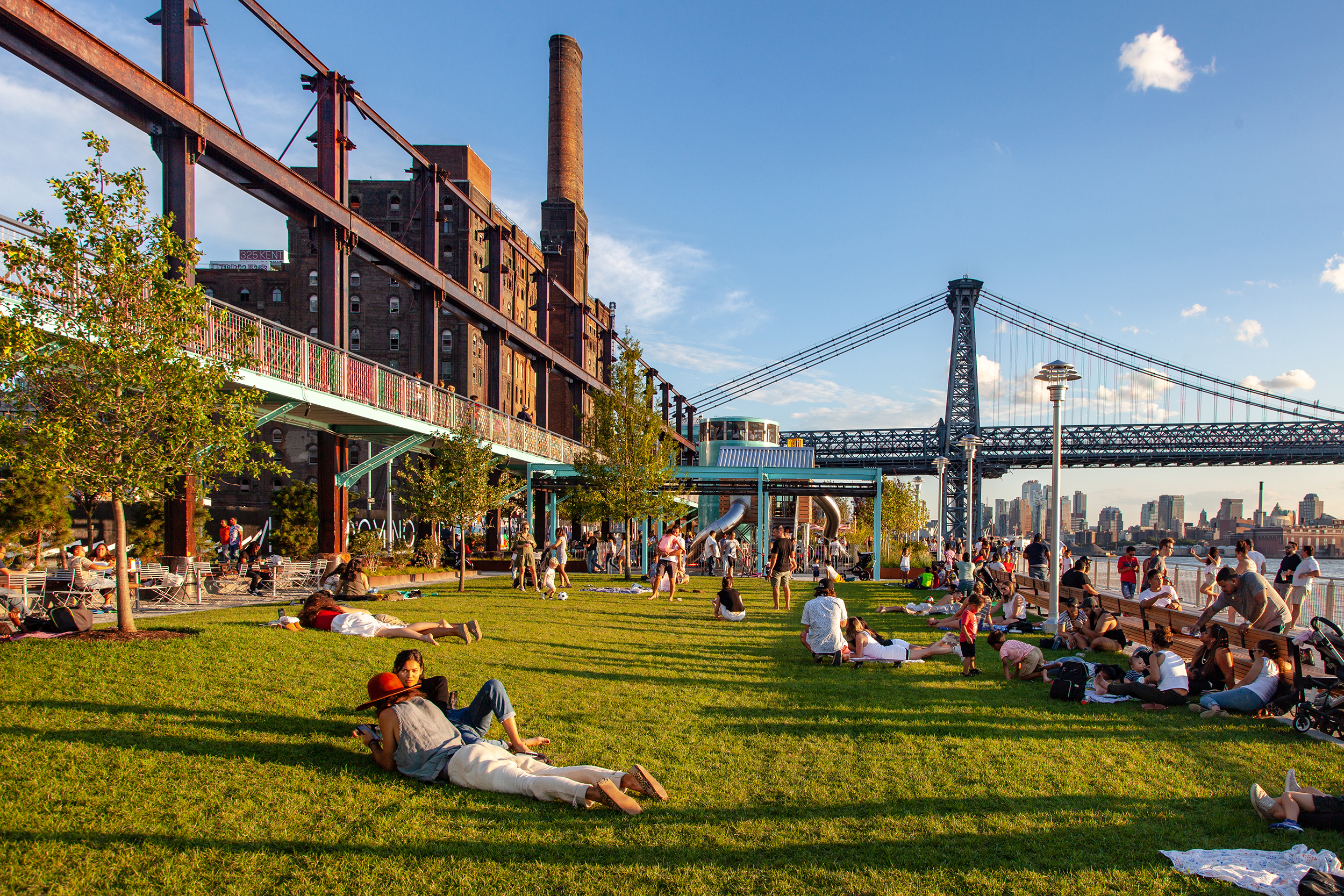
Domino Park by Field Operations, Williamsburg, New York
Once a former sugar refinery, built on the water to receive daily shipments of raw sugar, now stands as a symbol of Brooklyn’s industrial past. The industrial factory has been brilliantly transformed into a contemporary office space, demonstrating Brooklyn’s ability to evolve in response to shifting design trends and demands. As part of the Domino Park waterfront revitalization, the refinery reconnects the industrial site to the waterfront, enhancing community gathering spaces and contributing to the area’s ongoing transformation. The building showcases a striking glass dome on top of the original structure, which houses offices, retail space, and amenities. This architectural feature infuses the space with an airy ambiance, contrasting with the sturdy brick structure below and creating a captivating interplay of forms.
Empire Stores
By Studio V Architecture and S9 ARCHITECTURE, Dumbo, New York
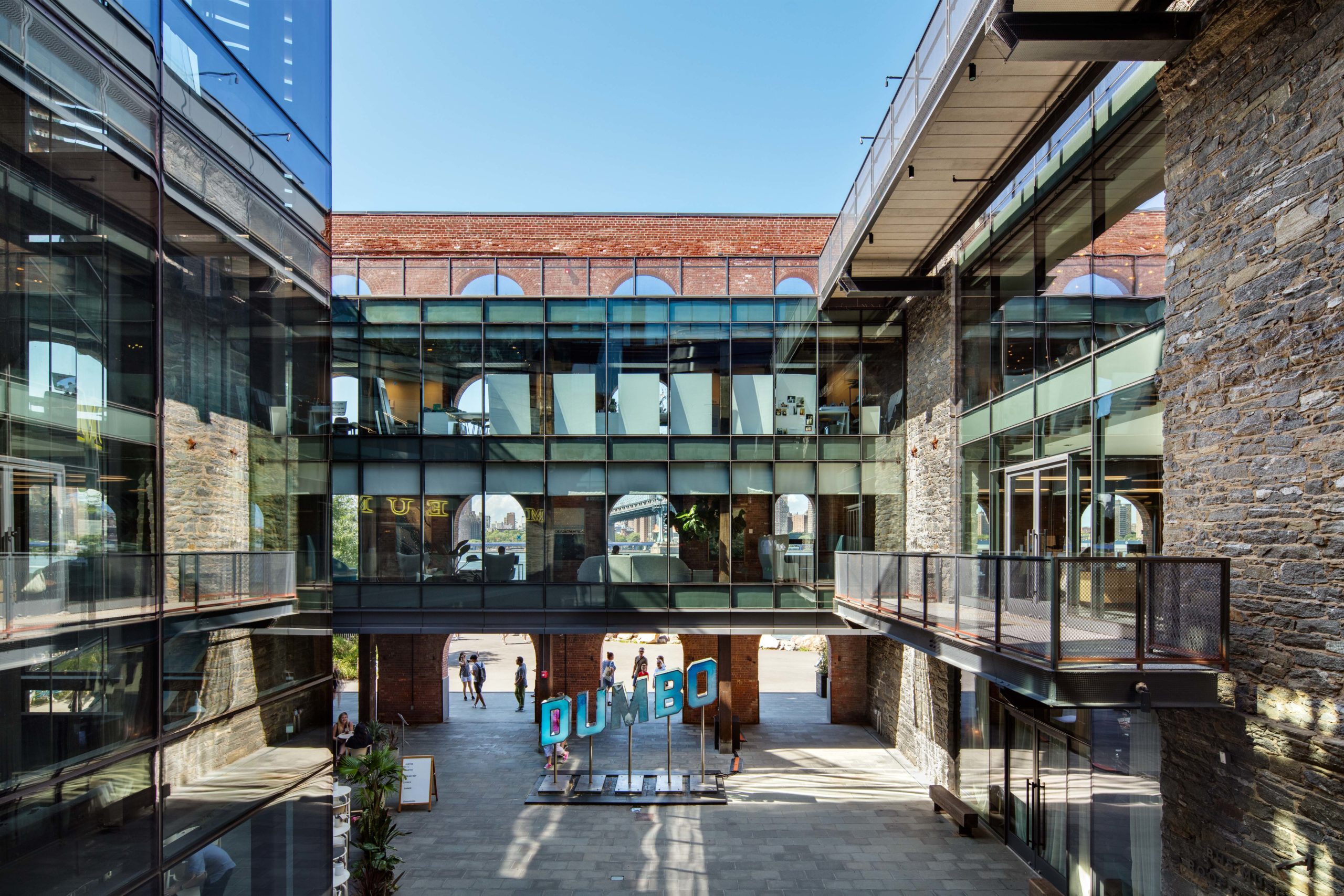
Empire Stores by Studio V Architecture and S9 ARCHITECTURE, Dumbo, New York
In 2017, the formerly vacant 19th-century warehouse, now named The Empire Stores in Dumbo, underwent a visionary transformation into a dynamic contemporary workspace and lively public venue. Enriching the local community experience, this project introduces retail outlets, dining options, public areas, and exhibition galleries to the neighborhood. The historical significance of the former warehouse is preserved by blending its historic brick façades with contemporary design elements, with one of its main features being a four-story outdoor central courtyard excavated at the center of the building. The building fosters connectivity between DUMBO and Brooklyn Bridge Park, enriching the waterfront experience with stunning views of the Manhattan skyline.
St. Ann’s Warehouse
By Marvel Architects, Dumbo, New York
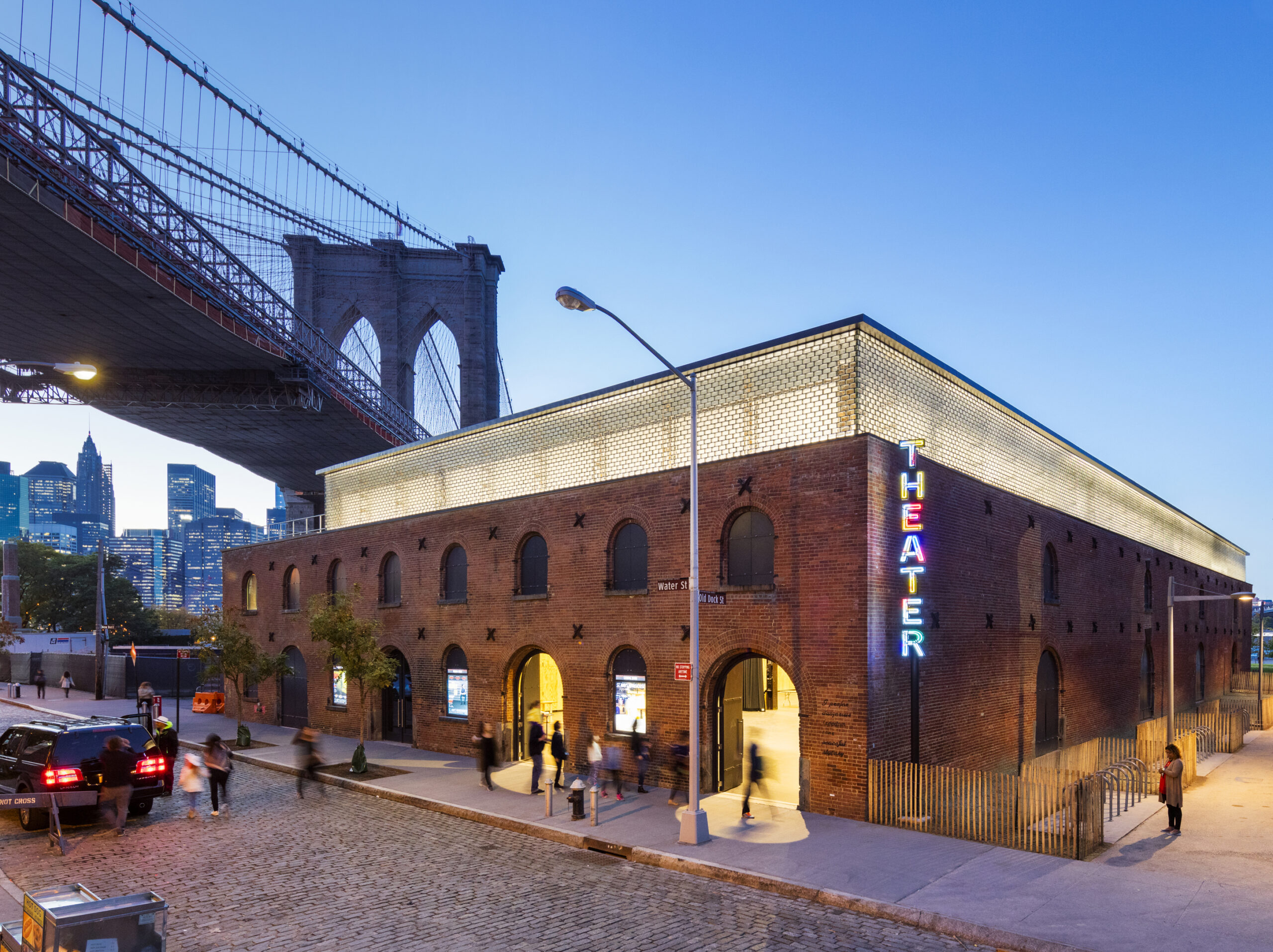
St. Ann’s Warehouse by Marvel Architects, Dumbo, New York
St. Ann’s Warehouse, originally a 19th-century tobacco warehouse, served as a storage facility for tobacco along the Brooklyn waterfront in its early years. As part of the initiative to revitalize Brooklyn’s waterfront in Dumbo, the building has been transformed into a 21st century cultural venue hosting theater productions, concerts and community events. The venue’s adaptable performance area and pioneering design have attracted artists and audiences from across the globe, offering live performances against the backdrop of its historic brick walls.
DOCK 72
By S9 Architecture, Brooklyn Navy Yard, New York
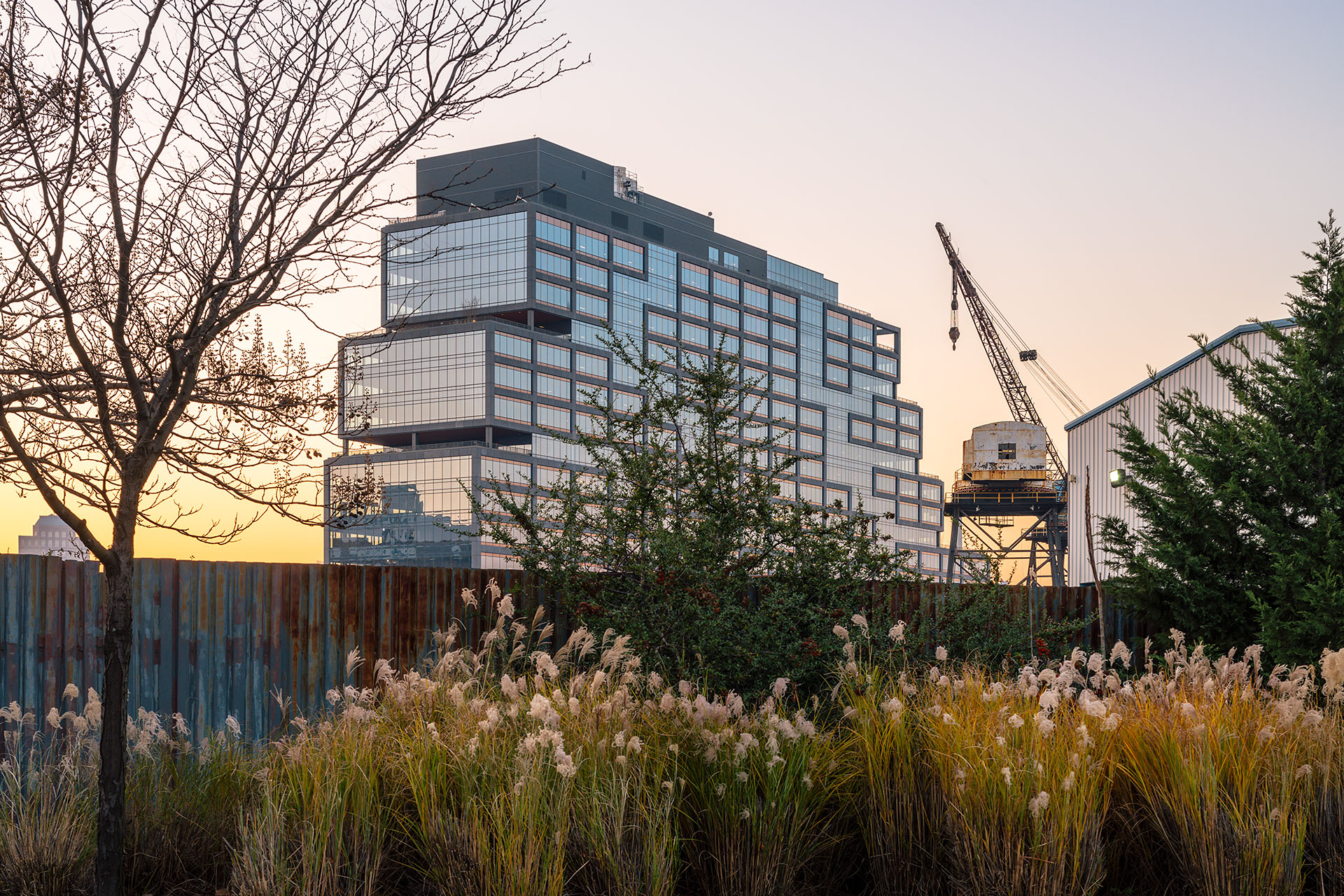
DOCK 72 by S9 Architecture, Brooklyn Navy Yard, New York
What sets this project apart is the unique site it was built upon. Throughout the 19th and 20th century, military ships were serviced at the dry Dock 72, as well as the neighboring docks. Dock 72 stands on a site steeped in history, once devoted to the construction of numerous navy battleships during pivotal moments in history such as the Civil War and World War II. Today, this site has been reimagined as a hub for fostering innovation and collaboration among startups and established businesses. The design of the building incorporates elements reminiscent of naval architecture and industrial shipbuilding. This office building offers modern amenities such as a rooftop conference center and a waterfront promenade, promoting a dynamic work environment within a historic setting.
Wythe Hotel
By Morris Adjmi Architects, Williamsburg, New York
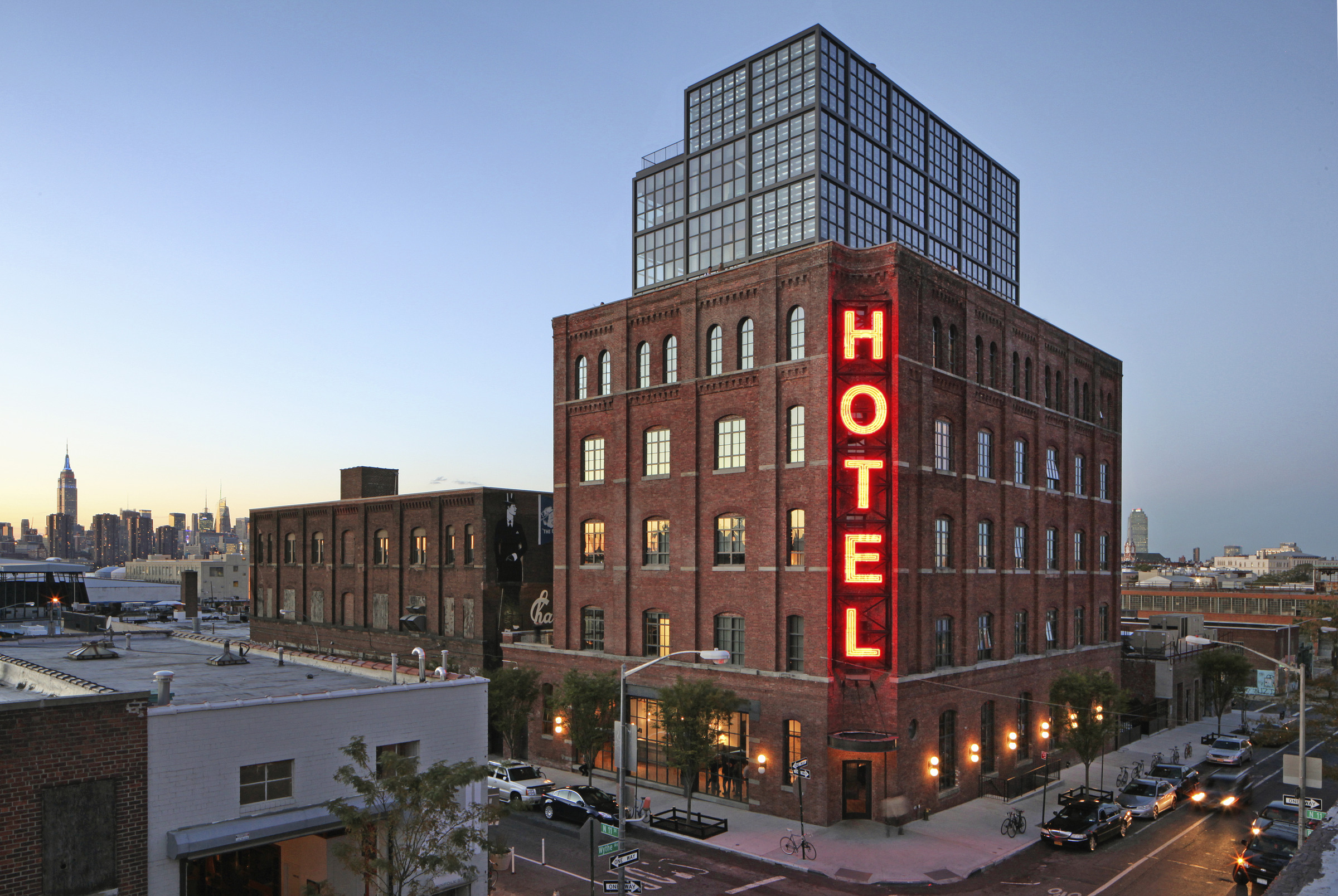
Wythe Hotel by Morris Adjmi Architects, Williamsburg, New York
A former cooperage and textile factory, integral to Williamsburg’s industrial heritage, Wythe Hotel has been transformed into a boutique hotel that has been enhanced by the post-industrial spaces and materials found in the original building. The original building stands as a testament to its heritage, respected and preserved, while the modern hotel integrates industrial elements such as exposed brick and timber beams with contemporary design, providing guests with a distinctive urban experience. A significant portion of the western side of the original brick structure was replaced with a large window wall, mirroring the design of the original factory windows. This alteration now offers hotel guests breathtaking views of Manhattan from their rooms.
Navy Yard Building 92
By Beyer Blinder Belle, Brooklyn Navy Yard, New York
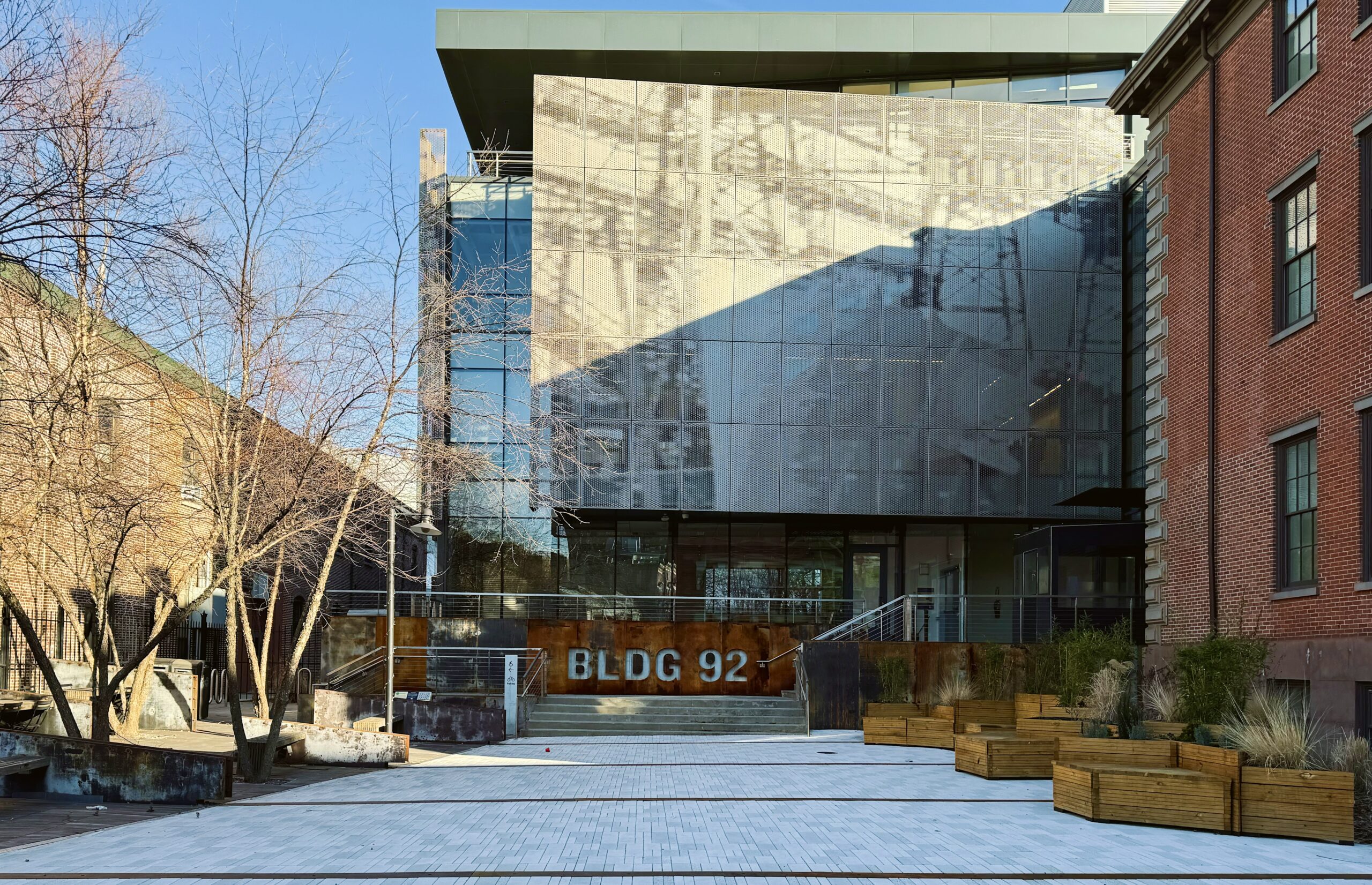
Navy Yard Building 92 by Beyer Blinder Belle, Brooklyn Navy Yard, New York, Photo by Ema Bakalova
Originally serving as a marine commandant’s residence, Building 92 has undergone a transformation to become a public education center within the Brooklyn Navy Yard. The modern extension connects to the historic structure through a central atrium, functioning as both the primary entrance and central gathering space. Today, it stands as a symbol of the Navy Yard’s heritage and innovation, repurposed into a vibrant visitor center and exhibition space, where the rich history and groundbreaking achievements of the Navy Yard are showcased for the community and visitors alike.
10 Jay
By ODA, Dumbo, New York
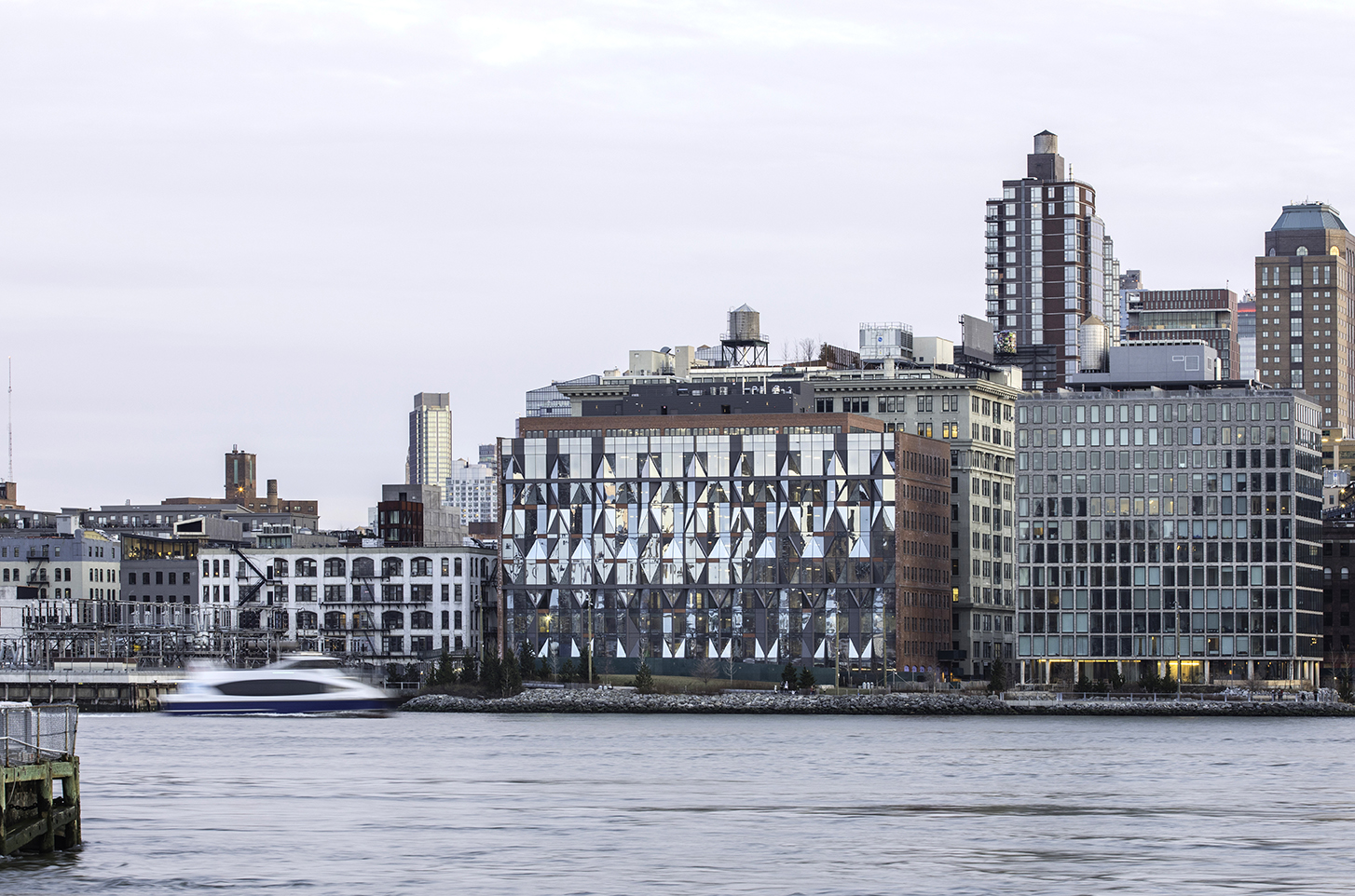
10 Jay by ODA, Dumbo, New York
A 19th-century industrial building, that was originally the Arbuckle Brothers sugar refinery, is part of Dumbo’s historic warehouse district. 10 Jay has been transformed into luxury condominiums, offering residents modern amenities and impressive views of the East River. The building maintains its industrial heritage through a fusion of brick, steel and glass, harmonizing vintage allure with modern interiors for a distinctive blend of past and present. The building’s façade serves as a direct connection to the waterfront, drawing inspiration from sugar crystals to create a design that beautifully reflects the light of the sunset, the river and the iconic Manhattan Bridge nearby.
Last chance: The 14th Architizer A+Awards celebrates architecture's new era of craft. Apply for publication online and in print by submitting your projects before the Final Entry Deadline on January 30th!
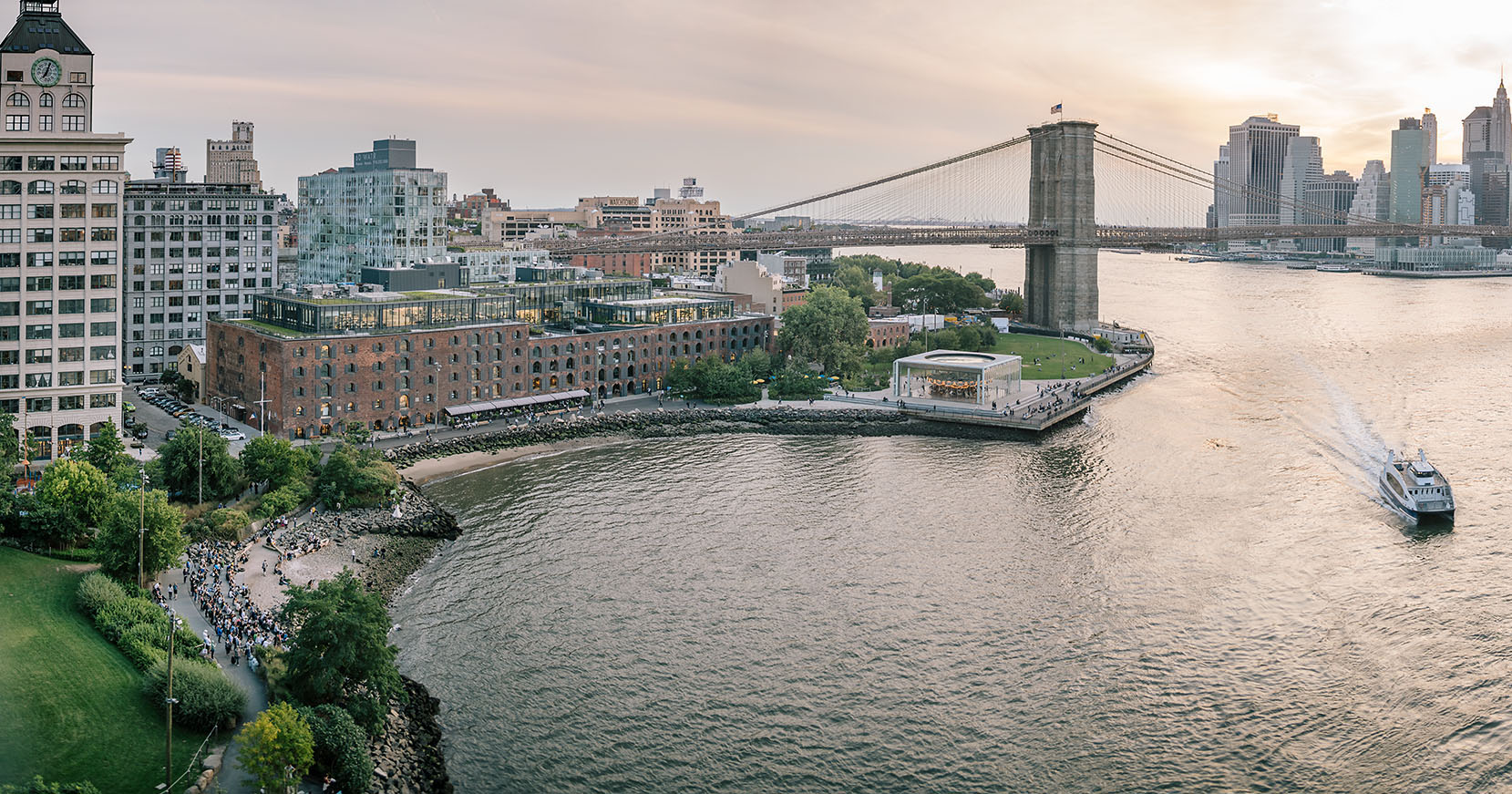
 10 Jay
10 Jay  Dock 72 Lobby at Brooklyn Navy Yard
Dock 72 Lobby at Brooklyn Navy Yard  Domino Sugar Refinery
Domino Sugar Refinery  Empire Stores
Empire Stores  Wythe Hotel
Wythe Hotel 


